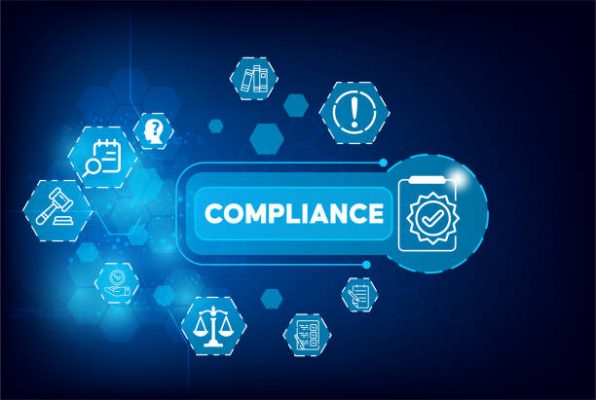
- April 24 2025
- SFI Solution Team
How to Ensure Compliance When Integrating HR and Payroll Systems
In the contemporary digital work environment, the integration of HR and payroll systems has transitioned from being a luxury to an essential requirement. The smooth transfer of employee information between platforms enhances efficiency, minimizes manual errors, and facilitates better decision-making. Nevertheless, the intricate nature of merging two highly regulated systems presents a considerable challenge: compliance. Ensuring compliance during the integration of HR and payroll systems is vital for mitigating risks, safeguarding employee information, and fulfilling legal responsibilities. This detailed guide will examine the critical factors, recommended practices, and resources that large organizations can utilize to maintain compliance throughout the integration process.
Why Compliance Matters in HR and Payroll Integration
Human Resources and payroll systems house sensitive information, including personally identifiable information (PII), tax data, benefits, and employment contracts. Failing to comply with data protection laws and labor regulations can lead to hefty fines and penalties, loss of employee trust, reputational damage, and operational disruption. With increasing regulations such as GDPR, HIPAA, SOC 2, and the Fair Labor Standards Act (FLSA), compliance should be embedded in every phase of your integration strategy.
Key Compliance Challenges During HR and Payroll System Integration
Data Privacy and Security
Merging systems means transferring and storing large volumes of sensitive employee data. Without robust data encryption, access controls, and auditing mechanisms, companies risk data breaches and regulatory violations.
Inconsistent Data Governance
Disparate systems often have different data structures, standards, and update frequencies. This mismatch can result in inaccurate payroll processing or misreported compliance information.
Jurisdictional Compliance
Global companies must consider country-specific labor laws, tax codes, and data residency requirements. Integrating systems without local compliance in mind can trigger legal complications.
Audit and Reporting Requirements
HR and payroll data must be accessible and traceable for audit purposes. Poor integration can hinder real-time reporting and compromise compliance audits.
Best Practices to Ensure Compliance When Integrating HR and Payroll Systems
Conduct a Compliance Assessment Before Integration
Before any data migration or system integration, conduct a thorough compliance audit. Identify applicable laws based on your geographic footprint and industry, including GDPR (Europe), CCPA (California), HIPAA (for healthcare), and IRS/SSA reporting requirements in the USA. This helps shape your integration framework to meet all regulatory standards.
Choose Compliant Software Vendors
Select HR and payroll software solutions that are certified for compliance standards such as ISO 27001, SOC 2, or PCI DSS. Make sure your integration middleware or API gateway also follows stringent security and privacy protocols.
Implement Role-Based Access Controls (RBAC)
Ensure only authorized personnel have access to sensitive data. Integrate with identity and access management (IAM) systems to enforce RBAC and maintain a secure audit trail of all data access events.
Standardize and Cleanse Data
Before integration, normalize data fields such as job titles, compensation types, and employment statuses. Cleanse outdated or inaccurate data to avoid payroll errors and compliance gaps.
Establish an Integration Governance Framework
Create a governance committee including stakeholders from HR, IT, payroll, and compliance. This team will oversee data policies, integration protocols, and audit readiness.
Automate Compliance Reporting
Use analytics tools that can automatically track, log, and report on key compliance metrics. This saves time and reduces the margin of error during audits or regulatory inspections.
Monitor and Test Regularly
Even after the systems are integrated, compliance is not a one-time checkbox. Regularly test the integration for security vulnerabilities, regulatory updates, and data synchronization issues.
Technologies That Support HR and Payroll Compliance
Here are some tools and technologies that can aid compliance during system integration :
-
API Management Platforms (e.g., MuleSoft, Boomi) : Ensure secure and standardized data exchange.
-
Data Loss Prevention (DLP) Tools : Monitor and prevent unauthorized data access or transmission.
-
Compliance Management Software (e.g., OneTrust, LogicGate) : Streamline audits and manage regulatory obligations.
-
Encryption Solutions : Encrypt data at rest and in transit to meet security standards.
-
IAM Solutions (e.g., Okta, Azure AD) : Control who accesses what data and when.
Conclusion
Integrating HR and payroll systems is a transformative step for enterprise efficiency—but it must be done with a keen eye on compliance. From selecting secure vendors to standardizing data and automating audit trails, there are multiple layers to consider.
By following the best practices outlined in this guide, your organization can unlock the benefits of integration without compromising legal or ethical standards. Remember, a well-integrated and compliant HR-payroll system not only ensures peace of mind—it also builds a culture of trust and transparency among your workforce.
Previous Post